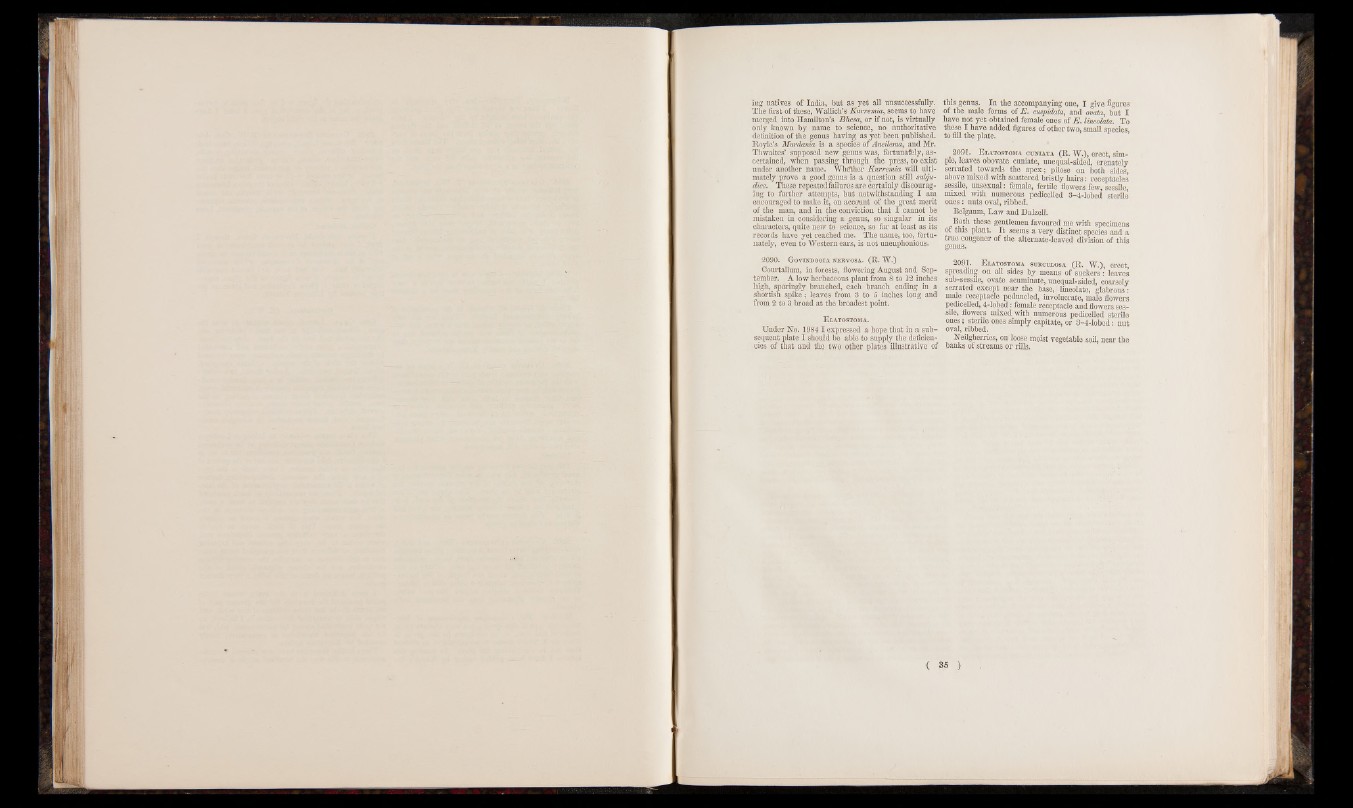
ing natives of India, b at as yet all unsuccessfully.
The first of these, WaHich’s Kurremia, seems to have
merged into Hamilton’s Bhesa, or if not, is virtually
only known by name to science, no authoritative
definition of the genus having as yet been published.
Hoyle’s Murdania is a species of Aneilema, and Mr.
Thwaites’ supposed new genus was, fortunately, ascertained,
when passing through the press, to exist
under another name. Whether Kurremia will ultimately
prove a good genus is a question still subju-
dice. These repeatedfailures are certainly discouraging
to farther attempts, but notwithstanding I am
encouraged to make it, on account of the great merit
of the man, and in the conviction that I cannot be
mistaken in considering a genus, so singular in its
characters, quite new to science, so far at least as its
records have yet reached me. The name, too, fortunately,
even to Western ears, is not uneuphonious.
2090. Govindooia nervosa. (R. W.)
Courtallum, in forests, flowering August and September.
A low herbaceous plant from 8 to 12 inches
high, sparingly branched, each branch ending in a
shortish spike; leaves from 3 to 5 inches long and
from 2 to 3 broad at the broadest point.
E latostoma.
Under No. 19841 expressed a hope that in a subsequent
plate I should be able to supply the deficiencies
of that and the two other plates illustrative of
this genus. In the accompanying one, I give figures
of the male forms of E . cuspidata, and ovata, but I
have not yet obtained female ones of E . lineolata. To
these I have added figures of other two, small species,
to fill the plate.
2091. E latostoma cuniata (R. W.), erect, simple,
leaves obovate cuniate, unequal-sided, crenately
serrated towards the apex; pilose on both sides,
above mixed with scattered bristly hairs: receptacles
sessile, unsexual: female, fertile flowers few, sessile,
mixed with numerous pedicelled 3-4-lobed sterile
ones: nuts oval, ribbed.
Belgaum, Law and Dalzell.
Both these gentlemen favoured me with specimens
of this plant. I t seems a very distinct species and a
true congener of the alternate-leaved division of this
genus.
2091. E latostoma surctjxosa (R. W.), erect,
spreading on all sides by means of suckers: leaves
sub-sessile, ovate acuminate, unequal-sided, coarsely
serrated except near the base, lineolate, glabrous:
male receptacle peduncled, involucrate, male flowers
pedicelled, 4-lobed: female receptacle and flowers sessile,
flowers mixed with numerous pedicelled sterile
ones; sterile ones simply capitate, of 3-4-lobed: nut
oval, ribbed.
Neilgherries, on loose moist vegetable soil, near the
banks of streams or rills.